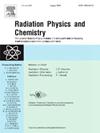Correlation of proton conductivity and free volume in sulfonated polyether ether ketone electrolytes: A positron annihilation lifetime spectroscopy study
IF 2.8
3区 物理与天体物理
Q3 CHEMISTRY, PHYSICAL
引用次数: 0
Abstract
Proton-conducting polymers play a pivotal role in clean energy technologies and various industrial applications, with a significant emphasis on enhancing energy efficiency and minimizing environmental impact. Sulfonated polyether ether ketone (SPEEK), which is renowned for its proton conductivity, has emerged as a key material in electrochemical processes, notably in proton exchange membrane (PEM) fuel cells. This study investigated the proton conductivity and dielectric behavior of SPEEK electrolytes at varying degree of sulfonation (DS) of 65% and 80%, correlating these properties with free volume profiles determined by positron annihilation lifetime spectroscopy (PALS). The SPEEK-65 and SPEEK-80 electrolytes were prepared via a controlled sulfonation process and characterized by FTIR, TGA, and SEM analyses. Proton conductivity and dielectric measurements were conducted at temperatures ranging from 300 to 370 K and frequencies ranging from 20 Hz to 1 MHz. The results revealed that SPEEK-80 exhibited a maximum proton conductivity of 3.4 × 10−2 S/m at 300 K and 1 MHz, which was significantly greater than the 4.38 × 10−3 S/m observed for SPEEK-65 under the same conditions. PALS analysis demonstrated a notable increase in free volume with increasing DS, with SPEEK-80 showing a higher o-Ps lifetime and intensity, indicating larger free volume sizes and fractions. These findings underscore the critical interplay between DS, free volume, and proton conductivity, offering insights into optimizing SPEEK-based electrolytes for advanced electrochemical applications.
磺化聚醚醚酮电解质中质子电导率与自由体积的相关性:正电子湮灭寿命光谱研究
质子传导聚合物在清洁能源技术和各种工业应用中发挥着举足轻重的作用,重点在于提高能源效率和最大限度地减少对环境的影响。磺化聚醚醚酮(SPEEK)以其质子传导性著称,已成为电化学过程中的一种关键材料,特别是在质子交换膜燃料电池中。本研究调查了不同磺化度(DS)(65% 和 80%)的 SPEEK 电解质的质子传导性和介电行为,并将这些特性与正电子湮灭寿命光谱(PALS)测定的自由体积剖面进行了关联。SPEEK-65 和 SPEEK-80 电解质是通过受控磺化工艺制备的,并通过傅立叶变换红外光谱、热重分析和扫描电镜分析进行了表征。质子电导率和介电测量是在温度为 300 至 370 K、频率为 20 Hz 至 1 MHz 的条件下进行的。结果显示,SPEEK-80 在 300 K 和 1 MHz 下的最大质子电导率为 3.4 × 10-2 S/m,明显高于 SPEEK-65 在相同条件下的 4.38 × 10-3 S/m。PALS 分析表明,随着 DS 的增加,自由体积显著增加,SPEEK-80 显示出更高的 o-Ps 寿命和强度,表明自由体积的尺寸和分数更大。这些发现强调了 DS、自由体积和质子电导率之间的重要相互作用,为优化基于 SPEEK 的电解质以实现先进的电化学应用提供了启示。
本文章由计算机程序翻译,如有差异,请以英文原文为准。
求助全文
约1分钟内获得全文
求助全文
来源期刊

Radiation Physics and Chemistry
化学-核科学技术
CiteScore
5.60
自引率
17.20%
发文量
574
审稿时长
12 weeks
期刊介绍:
Radiation Physics and Chemistry is a multidisciplinary journal that provides a medium for publication of substantial and original papers, reviews, and short communications which focus on research and developments involving ionizing radiation in radiation physics, radiation chemistry and radiation processing.
The journal aims to publish papers with significance to an international audience, containing substantial novelty and scientific impact. The Editors reserve the rights to reject, with or without external review, papers that do not meet these criteria. This could include papers that are very similar to previous publications, only with changed target substrates, employed materials, analyzed sites and experimental methods, report results without presenting new insights and/or hypothesis testing, or do not focus on the radiation effects.
 求助内容:
求助内容: 应助结果提醒方式:
应助结果提醒方式:


